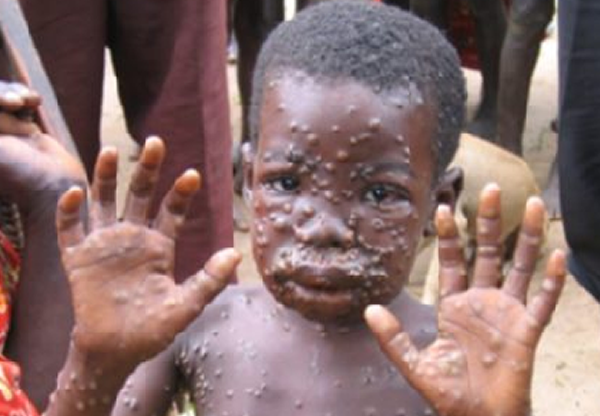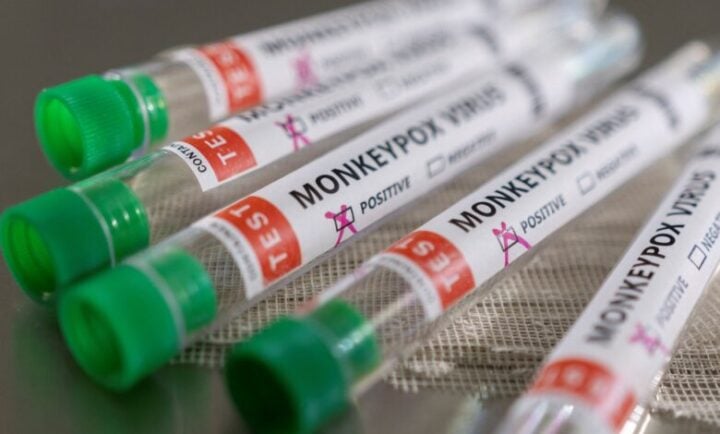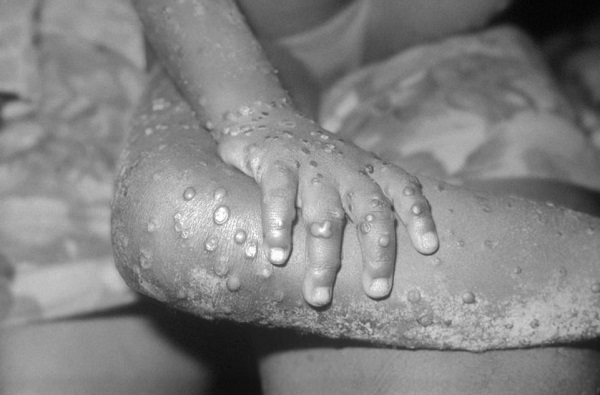On Wednesday, the World Health Organisation (WHO) declared mpox a “public health emergency of international concern” — for the second time in two years.
The announcement came a day after the Africa Centre for Disease Control (CDC) declared mpox a “public health emergency of continental security”.
The WHO declared mpox a “public health emergency of international concern” (PHEIC) for the first time in July 2022, and it lasted until May 2023, when cases were brought under control.
The last time the organisation made such a designation for a disease was in January 2020 in response to the COVID-19 outbreak.
Advertisement
Here’s what you need to know about the mpox outbreak:
WHAT IS MPOX?

Mpox, formerly known as monkeypox, is a virus that originates from wild animals like rodents and is transmitted to humans with symptoms very similar to those seen in the past in smallpox patients, although it is clinically less severe.
Advertisement
Mpox was first detected in humans in the Democratic Republic of the Congo (DRC) in 1970. There are two subtypes of the virus: clade I and clade II.
Animal-to-human transmission can occur from direct contact with infected animals’ blood, bodily fluids, or mucosal lesions. The virus can also spread from human to human, although it is less common.
Symptoms include fever, an intense headache, swelling of the lymph nodes, back pain, muscle aches, a lack of energy, and a rash after three days. The rash often starts as flat, red bumps that turn into blisters filled with pus.
WHAT IS RESPONSIBLE FOR CURRENT OUTBREAK?
Advertisement
While the 2022 outbreak was driven by clade II of mpox, the current outbreak is fueled by a new strain of clade I, which can be more deadly.
The new strain, called clade Ib, was detected among sex workers in the remote mining town of Kamituga in the south Kivu province of the Democratic Republic of the Congo (DRC) in September 2023.
The new variant spreads more easily through routine close contact, as seems to be the case among children.
Children under 15 account for more than 70 percent of the mpox cases and 85 percent of deaths in Congo.
Advertisement
Unlike in previous mpox outbreaks, where lesions were mostly seen on the chest, hands, and feet, this new mpox variant causes milder symptoms and lesions on the genitals, making it harder to detect.
The WHO said that clade Ib causes more severe disease than clade II, with deaths in around 3.6 percent of cases.
Advertisement
COUNTRIES AFFECTED BY CURRENT OUTBREAK
According to the Africa CDC, between January 2022 and August 4, there were 38,465 cases of mpox and 1,456 deaths in Africa.
Advertisement
Since the beginning of this year, more than 15,600 cases and 537 deaths have been recorded, with more than 96 percent of cases being reported from the Democratic Republic of the Congo.
But over the last month, Burundi, Kenya, Rwanda, and Uganda all reported their first-ever mpox cases. The WHO said over 100 laboratory-confirmed cases of clade Ib have been reported in the four countries.
Advertisement
Authorities have also reported outbreaks of a different and less dangerous version of mpox that spread worldwide in 2022 in the Ivory Coast and South Africa.
Last week, the Africa CDC reported that, overall, mpox has now been detected in at least 13 African countries.
The mpox cases reported in the first half of this year are more than in all of 2023, with cases up by 160 percent and deaths by 19 percent.
WHAT DOES AN EMERGENCY DECLARATION MEAN?
A public health emergency of international concern is the highest level of alarm under international health law. WHO’s emergency declaration is meant to spur donor agencies and countries into action.
Jean Kaseya, director-general of the Africa CDC, said the agency’s declaration of a public health emergency was meant “to mobilize our institutions, our collective will, and our resources to act swiftly and decisively.”
He appealed to Africa’s international partners for help, adding that the escalating caseload in Africa had largely been ignored.
WHAT IS BEING DONE TO CURB THE OUTBREAK?

Vaccines were quickly deployed in Europe and North America during the outbreak of 2022, but the vaccines have largely not been made available in the African countries most affected by mpox.
On Wednesday, the European Commission’s Health Emergency Preparedness and Response Authority (HERA) said it would procure and donate 215,000 mpox vaccine doses to respond to the outbreak in Africa.
However, the Africa CDC DG stated that the doses — which require two shots per person — would not be enough.
He said there is a plan to secure 10 million vaccine doses for Africa.
Meanwhile, the WHO said it is working with countries and vaccine manufacturers on potential vaccine donations and coordinating with partners through the interim medical countermeasures network to facilitate equitable access to vaccines, therapeutics, diagnostics, and other tools.
The global health body said it has released $1.45 million from its contingency fund for emergencies, with plans to release more in the coming days.
The organisation also said it anticipates an immediate funding requirement of an initial $15 million to support surveillance, preparedness, and response activities.
Add a comment









